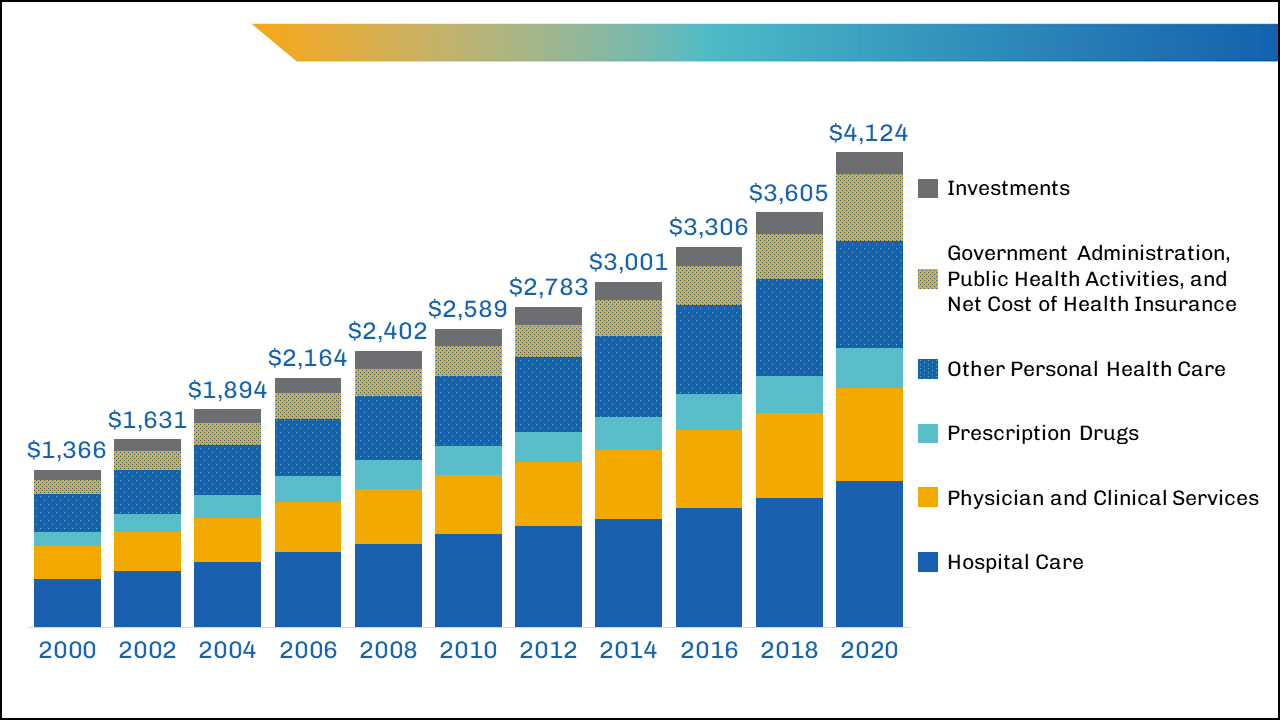Just How Healthcare RCM Solutions Streamline Payment and Collections
Just How Healthcare RCM Solutions Streamline Payment and Collections
Blog Article
A Comprehensive Overview on How Healthcare RCM Functions to Enhance Billing and Collections
Navigating the intricacies of health care revenue cycle monitoring (RCM) is critical for providers intending to improve their billing and collections procedures. The overview unboxes the details of RCM, from client registration to receivables administration, offering understandings into maximizing each action. Incorporating advanced innovation and standard procedures can dramatically reduce case denials and increase repayment cycles. Yet, real difficulty depends on effortlessly merging these aspects to boost money flow. As we check out the core components and approaches that drive effectiveness, one inquiry stays: just how can healthcare entities finest placement themselves to prosper financially in an ever-evolving market?
Recognizing Revenue Cycle Administration
Grasping the ins and outs of Income Cycle Management (RCM) is essential for health care companies intending to optimize their economic efficiency. RCM is a critical administrative function that includes the whole monetary procedure of individual treatment, from the preliminary visit readying to the final repayment of the balance. It is a complex procedure designed to identify, accumulate, and handle the income from the services offered to clients. Efficient RCM guarantees that health care suppliers get timely and accurate repayments, reducing the risk of revenue loss and boosting capital.
The RCM process starts when an individual routines a consultation and prolongs through the person's care trip, including billing and collections. A crucial goal is to reduce the time in between supplying a service and getting payment, hence improving the company's monetary wellness. RCM involves different functions such as client enrollment, insurance policy verification, cost capture, coding, claims entry, settlement publishing, and taking care of appeals and denials.
Secret Elements of RCM
In the realm of Profits Cycle Monitoring (RCM), comprehending its vital components is essential to attaining financial effectiveness within medical care organizations. RCM is a thorough process that encompasses various phases, each essential to guaranteeing effective invoicing and collections. The main parts consist of client enrollment, insurance policy confirmation, charge capture, coding, claim submission, repayment uploading, and accounts receivable administration.


When coded, cases are sent to payers, where precision is paramount to prevent denials or hold-ups - Healthcare RCM. Settlement uploading entails videotaping the received payments, which enables the reconciliation of accounts. Finally, balance dues administration focuses on monitoring and attending to unsettled insurance claims, making sure timely follow-up and resolution
Each element of RCM is interconnected, and inefficiencies in any component can interfere with the whole cycle. Consequently, understanding these components is essential for doctor to maximize revenue and improve their monetary wellness.
Strategies for Efficient Payment

Standardizing payment treatments across the organization is an additional crucial method. Establishing clear standards for documents, coding, and submission helps keep uniformity and compliance with governing needs. Training staff frequently on these procedures ensures everyone is current with the current modifications in invoicing codes and payer policies.
Accurate cost capture is crucial in protecting against profits leakage. Applying routine audits and surveillance systems enables the identification and improvement of inconsistencies prior to they affect revenue. In addition, keeping open lines of interaction with payers aids to swiftly solve any disagreements or misunderstandings that might emerge.

Finally, engaging clients early in the invoicing process by offering clear estimates and academic products concerning their monetary duties can considerably reduce complication and improve repayment timeliness. These methods collectively add to an extra economically healthy and efficient payment system.
Enhancing Collections Procedures
A robust collections process is crucial for maintaining financial stability within health care organizations. Provided the intricacies of clinical invoicing and the variety of payer Get the facts requirements, boosting the collections process entails implementing tactical steps that ensure accurate and timely settlement of solutions made. Central to this is making use of technology to automate and enhance procedures, boosting and reducing manual errors effectiveness. Automation devices can aid in tracking claim conditions, sending timely tips to people, and managing denials better.
Educating personnel to comprehend the nuances of insurance coverage and payment codes is just as essential. This knowledge empowers them to address invoicing inconsistencies swiftly and interact efficiently with clients regarding their economic obligations. Additionally, clear and transparent individual communications are essential. Providing thorough descriptions of charges and supplying versatile layaway plan can boost client fulfillment and prompt settlements.
Regular audits of the collections procedure need to be conducted to recognize locations for renovation and make certain compliance with laws. By analyzing information, healthcare companies can recognize patterns, prepare for potential problems, and adjust methods as necessary (Healthcare RCM). Eventually, a well-enhanced collections procedure not just supports monetary wellness but additionally adds to a much more seamless experience for clients and team alike
Optimizing Revenue Streams
Building upon the foundation of a solid collections read more process, health care companies can better reinforce their monetary security by purposefully optimizing income streams. This includes a multi-faceted strategy, starting with a detailed evaluation of existing earnings resources to identify ineffectiveness and locations for development. Using advanced data analytics tools enables organizations to get understandings right into payer mix, patient demographics, and service usage patterns, enabling for data-driven choices that boost earnings capture.
Implementing automated billing systems can dramatically reduce errors and accelerate cases refining, making sure that earnings is accumulated much more effectively. Moreover, maximizing payer agreements via normal settlements can enhance compensation rates and terms, directly impacting the lower line. Expanding solution offerings, such as integrating telehealth or wellness programs, can likewise attract a wider client base, thus increasing revenue possibility.
An additional essential part is improving individual engagement and complete satisfaction, as satisfied patients are extra most likely to stick to therapy strategies and make timely settlements. Using flexible settlement choices and transparent payment methods can improve collections and foster person loyalty. Healthcare RCM. By adopting these methods, healthcare companies can produce a much more resilient monetary structure, making certain sustained development and stability in an ever-changing sector landscape
Final Thought
In conclusion, health care Revenue Cycle Monitoring (RCM) plays an important duty in enhancing payment and collections procedures by integrating crucial components such as patient enrollment, insurance verification, fee capture, coding, declares submission, and accounts receivable management. By employing innovative technology, systematizing procedures, and fostering person involvement, medical care providers can substantially minimize claim denials, speed up payment cycles, and boost cash money circulation. This comprehensive strategy to RCM inevitably leads to improved monetary effectiveness and sustainability for healthcare organizations.
The RCM procedure begins when a patient timetables an appointment and expands via the individual's care journey, consisting of invoicing and collections.One more important component is enhancing individual interaction and contentment, as pleased patients are much more most likely to adhere to treatment strategies and click now make timely payments. Using versatile payment choices and clear billing methods can boost collections and foster client commitment.In final thought, health care Revenue Cycle Management (RCM) plays a crucial duty in maximizing invoicing and collections processes by integrating vital components such as individual enrollment, insurance policy confirmation, cost capture, coding, claims entry, and accounts receivable administration. By employing sophisticated innovation, standardizing procedures, and fostering client involvement, health care suppliers can significantly reduce insurance claim denials, increase settlement cycles, and improve cash money flow.
Report this page